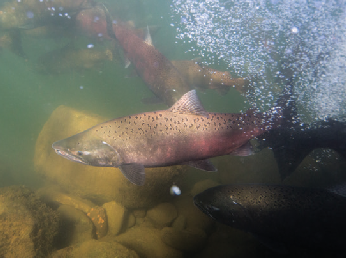From FishBio:
Chinook salmon (Oncorhynchus tshawytscha) that inhabit the rivers of California’s Central Valley reside on the southern edge of the species’ natural range, and as a result, their populations are facing significant challenges from climate change. This is particularly true of the critically endangered winter-run Chinook of the Sacramento River basin, whose populations have been cut off from their ancestral cold-water streams in the mountains of northern California for nearly 80 years. To prioritize and inform efforts to conserve the remaining winter-run Chinook population, scientists must evaluate and quantify how these fish use habitat across the abridged riverscape of today.
In an effort to learn more about movement behaviors and habitats used by winter-run smolts, a team of researchers conducted a five-year study of winter-run migration. Their recent publication (Hassrick et al. 2022) reveals valuable insights into the relationship between flow and winter-run smolt survival, as well as the significance and function of stopover habitats, areas where smolts can rest and feed on their journey.
Click here to read more from FishBio.



